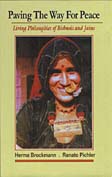
European Vegetarian and Animal News Alliance (EVANA)
en de fr pt es
it nl ro sl sq sv
 |
European Vegetarian and Animal News Alliance (EVANA) |
Select language: en de fr pt es it nl ro sl sq sv |
|---|
|
Book recommendation: 
Join us on  Facebook! RSS engl. RSS all lang. Donation to EVANA. |
World Water Day - 22 March 2009'Experts the world over agree that water scarcity might be one of the biggest global problems in the future'Press release - Veg Climate Alliance March 22 is World Water Day. Experts the world over agree that water scarcity might be one of the biggest global problems in the future. Climate change only adds to the problem. According to FAO, by 2025, 1.800 million people will be living in countries or regions with absolute water scarcity, and two-thirds of the world population could be under stress conditions. All the more reason to focus on one of the main causes of water use and water pollution: our insatiable - and still growing - desire for.... meat. The comparison is mind boggling: one kilogram of beef requires as much water as showering every day for an entire year. How is that possible? WATER USE FOR LIVESTOCK The livestock business is among the most damaging sectors to the earth's increasingly scarce water resources. Meat production requires a staggeringly high amount of water. The irrigation of feed crops for cattle accounts for nearly 8 percent of global human water use. In general, livestock products have a higher virtual water content (the water needed for the production of a good or service) than crop products. This is because a living animal consumes a lot of feed crops, drinking water and service water in its lifetime before it produces some output. WATER POLLUTION DUE TO LIVESTOCK RAISING For another thing, the contribution of livestock raising to water pollution, euthropication and the degeneration of coral reefs is significant. The major polluting agents are animal wastes, antibiotics and hormones, chemicals from tanneries, fertilizers and the pesticides used to spray feed crops.Widespread overgrazing disturbs water cycles, reducing replenishment of above and below ground water resources.[1] FUTURE PROJECTIONS Experts predict that by 2050 nearly twice as much meat will be produced as today, for a projected total of more than 465 million tons. Livestock now uses 30 percent of the earth's entire land surface, mostly permanent pasture but also including 33 percent of the global arable land used to producing feed for livestock.[2] When trying to save water, either as a consumer or as a government, we should pick our targets wisely. Producing 1 kg of meat requires as much water as an average domestic household does over 10 months (50l/person/day).[3] [1] FAO. Livestock a major threat to environment. November 29, 2006 [2] FAO, Livestock a major threat to environment, November 29, 2006 [3] SIWI STATISTICS ====== contact: Veg Climate Alliance Director Richard Schwartz director(at)vegclimatealliance.org phone: 718-761-5876 cell 917-576-0344
Link: Economic crisis sets back water utilities-World Bank Link: New Flash Eurobarometer on Water shows large concern about the water environment among EU citizens Link: Selfish use of rivers seen threatening political stability Link: World Water Day Date: 2009-03-20
|